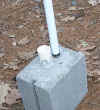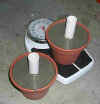|
Home
 Our
Camping Experience Our
Camping Experience
 FAQ
Page FAQ
Page
 Guest
Book Guest
Book
Natasha Pages:
 About
Natasha About
Natasha
 Natasha
Pictures Natasha
Pictures
 How
Could You? How
Could You?
 Doggie
Dictionary Doggie
Dictionary
 Camping
With Your Dog Camping
With Your Dog
Camp Site Pages:
 Our
Trips Our
Trips
 Fort
Wilderness Fort
Wilderness
 DC
Camping DC
Camping
Camper Pages:
 Our
Camper Our
Camper
 Tow
Vehicle Tow
Vehicle
 Site
Statistics Site
Statistics
Modification & Service:
 Detachable
Power Cable Detachable
Power Cable
 Modified
Drawers Modified
Drawers
 Mirror Mirror
 Single
Drain System Single
Drain System
 Drill
Lift System Drill
Lift System
 LED
Light System LED
Light System
 Accumulator
Tank Accumulator
Tank
 Florescent
Light Florescent
Light
 Bike
Rack Bike
Rack
 Outside
Shower Outside
Shower
 Batteries
in a PU Batteries
in a PU
 Bed
End Tray Bed
End Tray
 Battery
Charge Cable Battery
Charge Cable
 Stove
Counter Stove
Counter
 AC
Brace AC
Brace
 WH
Wind Guard WH
Wind Guard
 RV
Plug @ Home RV
Plug @ Home
 Awning
Base Awning
Base
 12v
Power Adaptor 12v
Power Adaptor
 Battery
Meter Battery
Meter
 Water
Level Indicator Water
Level Indicator
 Tongue
Jack Service Tongue
Jack Service
 Our
Bunk Our
Bunk
Information:
 Camping
With Your Dog Camping
With Your Dog
 Camping
Checklist Camping
Checklist
 Dry
Camping Dry
Camping
 Pop
Up Brakes Pop
Up Brakes
 Break
Away Switch Break
Away Switch
 Campsite
Safety Campsite
Safety
 Towing
& Hitch Info Towing
& Hitch Info
 Sway
Information Sway
Information
 Gray
Water Gray
Water
 Porta
Potti Porta
Potti
 RV
Air Conditioning RV
Air Conditioning
 Pop
Up Tires Pop
Up Tires
 Changing
a Flat Tire Changing
a Flat Tire
 Pop
Up Refrigerator Pop
Up Refrigerator
 Camp
Site Power Camp
Site Power
 Trailer
Dolly Trailer
Dolly
 Folding
Camp Table Folding
Camp Table
 Awning
Base Awning
Base
 Level
Your PopUp Level
Your PopUp
 Winterize
Your PopUp Winterize
Your PopUp
 Spring
Set Up Spring
Set Up
 Camp
Cooking Accessories Camp
Cooking Accessories
 Buying
a Used PopUp Buying
a Used PopUp
 Message
Board Shorthand Message
Board Shorthand
Camping Links:
 PopUpTimes PopUpTimes
 Camping
Links Camping
Links
 Camping
Club Links Camping
Club Links
 Manufacturer
Links Manufacturer
Links
GSD Links:
 MidAtlantic
GS Rescue MidAtlantic
GS Rescue
 GS
Rescue of LA GS
Rescue of LA
 Virginia
GS Rescue Virginia
GS Rescue
 Flying
Dog Press Flying
Dog Press
|
I
found it hard to set up the awning alone, so I devised these awning bases.
I started with 1 concrete building block and divided it in half (be sure the
block has 3 cells). Into the open cell I placed a short piece of PVC
pipe that the the awning support pole would fit into, then filling the cell
with cement.
Now,
set up is easy! Crank the top up half way, unzip the awning and unroll.
Set each awning leg in the base and then set the 3 bars from the camper top to
the outside awning edge. Adjust the bases to have the poles upright,
then finish cranking up the camper top.
All photos are thumbnails,
click to see an enlarged version
|
  Here are the original bases, without paint. Here are the original bases, without paint.
See the box on the bottom of the page for my new bases
|

The first step is to unzip the awning bag half way and remove the
poles. Set out the awning bases at the approximate location they
will be used.
|

Crank the top up half way, or as high as you can comfortably wok on the
bag/awning. For ease of use, I place the awning poles on the bunk
where I can grab them easily.
|
|

Now you can unzip the awning bag the rest of the way and
unroll the awning. Drop the legs into the bases and grab one of the
awning poles from the pop up bunk. Place this pole in the middle
position (you will need to keep holding the outer awning frame as the
bases can't support it at this point). Once the middle stand off
pole is in place the awning will now support itself. |

Insert the other stand off poles, then crank the pop up roof up.
Your awning is now set up. Just remember that if rain is even a
possibility lower one side of the awning to allow water to run off. |

To keep the awning from rising during periods of high wind without the
use of ropes, I drilled the base and the pole and insert a pin. Now
wind would need to lift the block along with the leg.
|
|
To cut the block in half, SLOWLY chip along the intended break point with a chisel or block hammer.
It takes a few minutes to get it started but it will finally break along the line you are scoring. Don't
rush it or try to do it in one shot.
For transport they ride just inside our stepper door, on top of the rubber Coleman floor
mat.
Both the block and cement are available at Home Depot. Go to the building materials isle (around the lumber) and
ask for small bags of cement. The small bags are used for patching jobs, but work well for this.
 After
posting this page, several people also built bases and modified the
original design. One that I really liked was to use small flower
post instead of cement blocks. These look a lot nicer and are easier
on the toes if you kick them. An additional advantage is the flower pots
filled with cement are a little lighter, saving me about 8 pounds for the
pair. To the lef t
you see the finished product as the cement is drying. To the right
the flower pots and the PVC I used. Note the piece of PVC on top of
the left pot. I drilled the bottom of the PVC and placed 2 nails
through each one to give the concrete something to grab on to. t
you see the finished product as the cement is drying. To the right
the flower pots and the PVC I used. Note the piece of PVC on top of
the left pot. I drilled the bottom of the PVC and placed 2 nails
through each one to give the concrete something to grab on to.
|

|
Revised: May 08, 2007
|